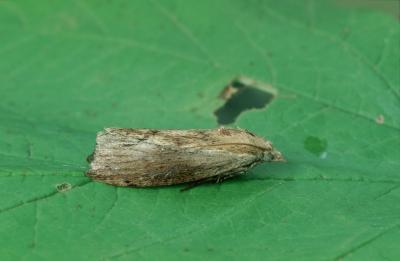The greater wax moth (Galleria mellonella of the family Pyralidae) is capable of sensing sound frequencies of up to 300 kHz, making it possessor of the highest recorded frequency sensitivity of any animal in the natural world.
Humans are only capable of hearing sounds from 20 Hz up to around 20 kHz maximum and that drops as we age, while our pets can hear at higher frequencies (leading to concern about things like the hum from ballasts in CFL bulbs) but even dolphins, famous for their ultrasound, only cap out at around 160 kHz.
Male wax moths produce sound with tymbals located on the forewing attachment and those trains of pulses attracts female to mate. Previous studies had suggested that their hearing extends higher into the ultrasonic range but only on the basis of behavioral experiments. Researchers showed experimental evidence that the ultrasonic frequency capability of the G. mellonella hearing organ uses an air-coupled ultrasonic transducer to produce ultrasound up to 300 kHz.
Dr. James Windmill, who led the research at the University of Strathclyde, said, "We are extremely surprised to find that the moth is capable of hearing sound frequencies at this level and we hope to use the findings to better understand air-coupled ultrasound. The use of ultrasound in air is extremely difficult as such high frequency signals are quickly weakened in air. Other animals such as bats are known to use ultrasound to communicate and now it is clear that moths are capable of even more advanced use of sound."

The greater wax moth. Credit: Ian Kimber)
"It's not entirely clear how the moths have developed to be able to hear at such a high frequency, but it is possible that they have had to improve the communication between each other to avoid capture from their natural predator – the bat – which use similar sounds."
The research findings will allow Windmill and colleagues to further develop their understanding of ultrasound and how to transmit and receive ultrasonic pulses traveling in air.
With frequency sensitivity that is unparalleled in the animal kingdom, this moth is ready for any echolocation call adaptations made by the bat in the on-going bat–moth evolutionary war.
Windmill's team is now working to apply the biological study of this, and other insect ears to the design of micro-scale acoustic systems. It is hoped that by studying the unprecedented capabilities of the moth's ear, the team can produce new technological innovations, such as miniature microphones.





Comments